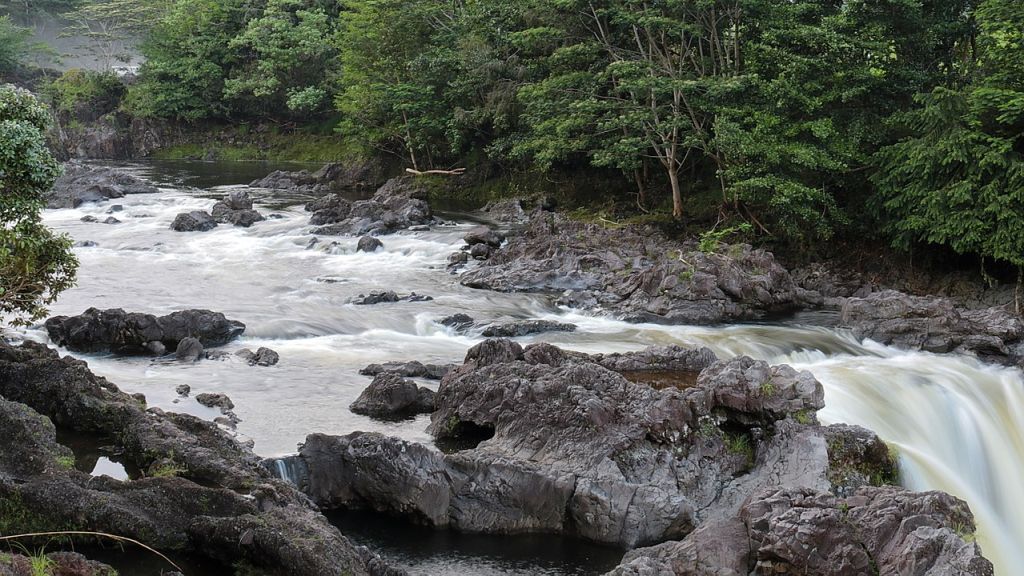Shifts in carbon exports from a Hawaiian watershed under a changing climate

Tropical volcanic islands, like Hawaiʻi Island, are particularly sensitive to shifts in precipitation patterns due to their small and steep watersheds, which also means a high land-sea connectivity. With climate change, rainfall patterns are expected to shift to more frequent and intense storms with longer dry periods between them. Furthermore, the occurrence of high-elevation rainfall is expected to decrease. These changes could alter the transport, source, quantity, and quality of carbon exported from rivers, which in turn may affect riverine and estuarine food webs. Presently, there is a gap in knowledge about the daily, monthly, and annual transport of carbon in its many forms from rivers to coastal waters, and we lack crucial knowledge about how this transport may shift with climate change.
This study focuses on exploring carbon in the Wailuku River, located on the northeast side of Hawai‘i Island. The Wailuku River’s headwaters start at 4200 m elevation and drain parts of the Mauna Kea and Mauna Loa volcano landscapes into Hilo Bay. At 653 km2, the Wailuku River watershed is the largest in the Hawaiian Islands For this project, water and drift net samples will be collected 50 times from the site over a range of discharge conditions from August 2021 through November 2022. Surface water grab samples will be collected and analyzed for isotopic composition of dissolved organic and inorganic carbon, particulate carbon, and oxygen and deuterium isotopic contents of the water. Daily, monthly, and annual carbon budgets for different carbon species will be produced, and projected annual carbon budgets will be generated for predicted changes in rainfall patterns.
PROJECT DETAILS
FUNDED:
FY2022
PI:
Tracy Wiegner
Professor of Marine Science, UH Hilo
Graduate Scholar:
Walter Boger
TCBES, UH Hilo
Co-I:
Steven Colbert
Assistant Professor of Marine Science, UH Hilo

